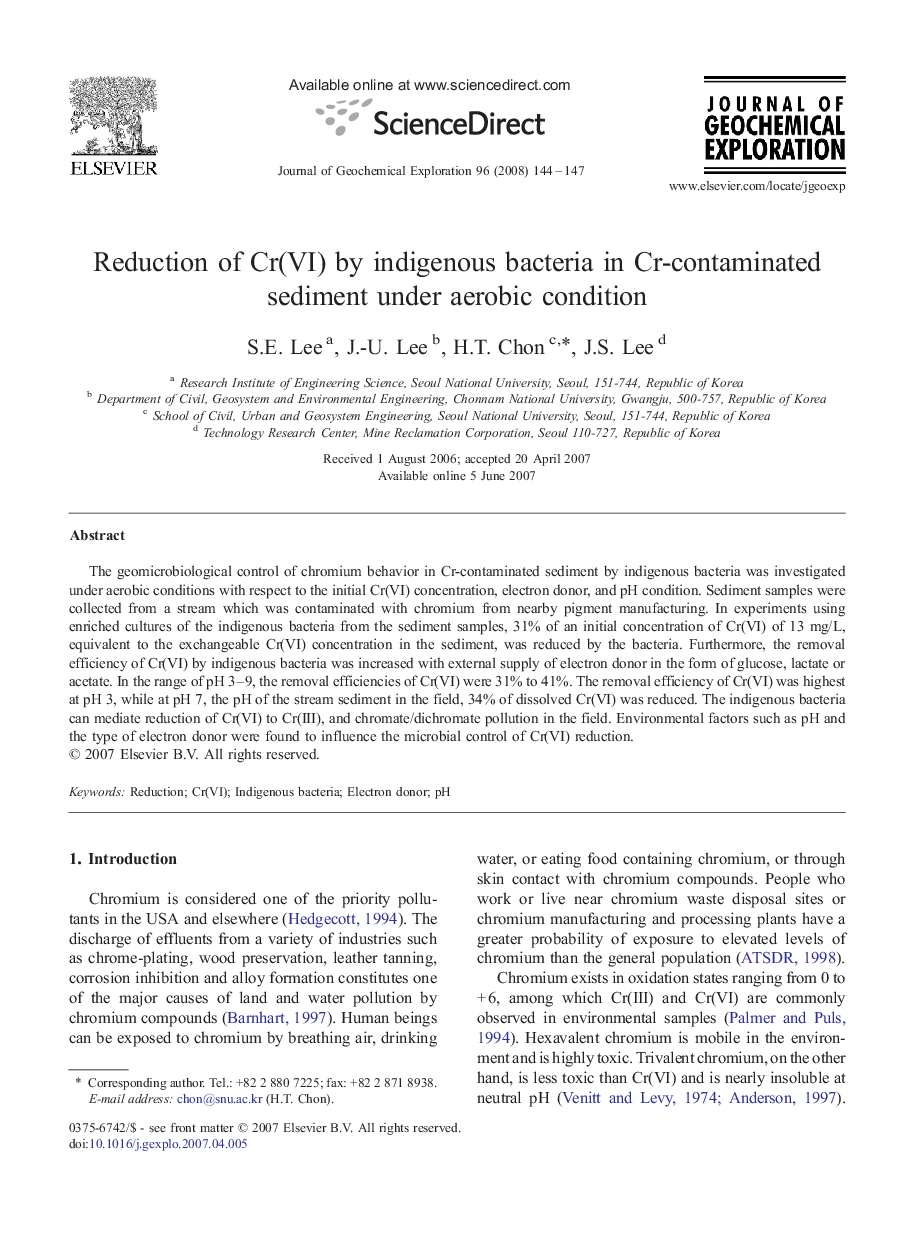| Article ID | Journal | Published Year | Pages | File Type |
|---|---|---|---|---|
| 4458300 | Journal of Geochemical Exploration | 2008 | 4 Pages |
The geomicrobiological control of chromium behavior in Cr-contaminated sediment by indigenous bacteria was investigated under aerobic conditions with respect to the initial Cr(VI) concentration, electron donor, and pH condition. Sediment samples were collected from a stream which was contaminated with chromium from nearby pigment manufacturing. In experiments using enriched cultures of the indigenous bacteria from the sediment samples, 31% of an initial concentration of Cr(VI) of 13 mg/L, equivalent to the exchangeable Cr(VI) concentration in the sediment, was reduced by the bacteria. Furthermore, the removal efficiency of Cr(VI) by indigenous bacteria was increased with external supply of electron donor in the form of glucose, lactate or acetate. In the range of pH 3–9, the removal efficiencies of Cr(VI) were 31% to 41%. The removal efficiency of Cr(VI) was highest at pH 3, while at pH 7, the pH of the stream sediment in the field, 34% of dissolved Cr(VI) was reduced. The indigenous bacteria can mediate reduction of Cr(VI) to Cr(III), and chromate/dichromate pollution in the field. Environmental factors such as pH and the type of electron donor were found to influence the microbial control of Cr(VI) reduction.
